3.1. Catchment and drainage#
Background#
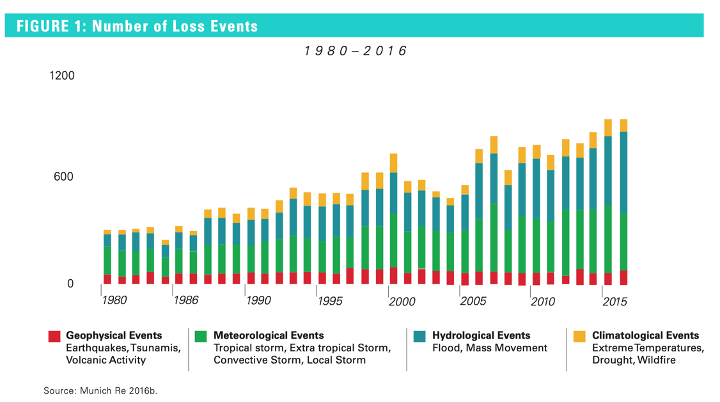
Fig. 3.1 Illustration of the number of major loss events by natural processes, showing the very large proportion of such events associated with flooding.#
Intense floods often lead to severe damage to property, land and infrastructure, and they are becoming one of the main destructive consequences of the more intense rainfall. This is a characteristic of global warming and is compounded by rapid land development which has not maintained adequate water drainage pathways, leading to under-capacity and flooding. Heavy rainfall events have been increasing up over time owing to the higher atmospheric temperatures and the associated capacity for the air to carry more moisture (Fig. 3.2).
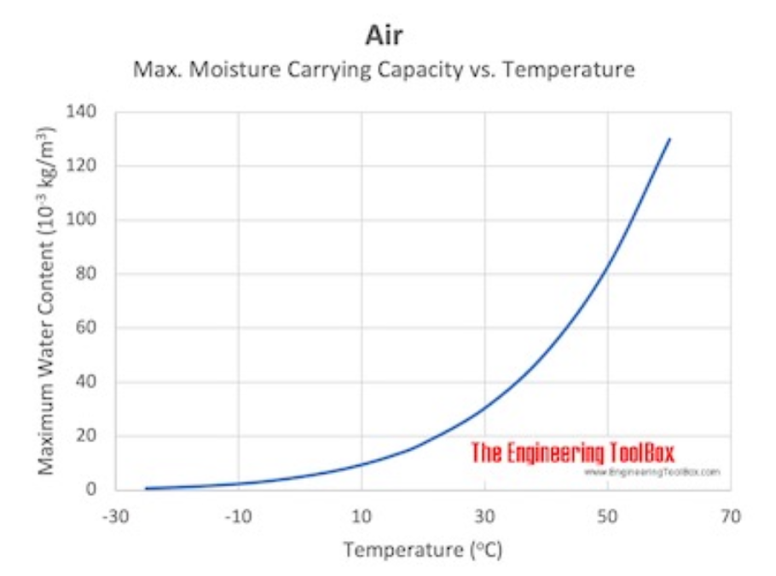
Fig. 3.2 Plot of the water carrying capacity of air at \(100 \ \%\) humidity, as a function of temperature. From The Engineering ToolBox, (2008).#
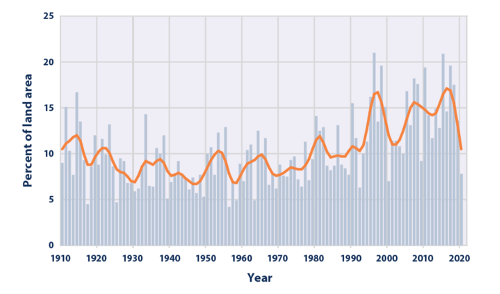
Fig. 3.3 The area of land subjected to heavy rain events every year in the US over time.#
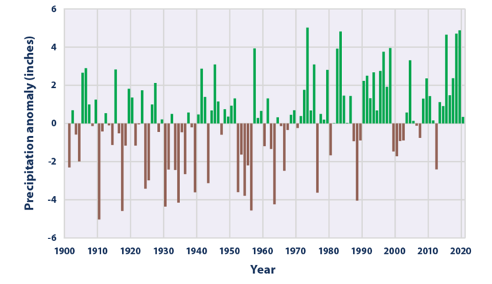
Fig. 3.4 The change in the total annual amount of precipitation in the contiguous 48 states of the USA since 1901. This uses the 1901-2000 average as a baseline for depicted change. Choosing a different baseline period would not change the shape of the pattern over time, but would change the absolute value.#
In the USA, this increase in carrying capacity has led to an increase in land area subject to heavy rainfall (Fig. 3.3), and an overall increase in the average precipitation over the last 90 years (Fig. 3.4). There is a clear trend towards heavier more intense rain and also of increasing annual rainfall.
Rainfall provides the source for much of the flooding inshore, and occurs when the drainage system is unable to accommodate the water flux associated with rain. However, sea level rise will also lead to flooding of near coastal areas, and the two maps below illustrate some predictions of those areas of East Anglia and London which may be submerged by 2100 AD with sea level rise predicted by some climate forecasts (Fig. 3.5).
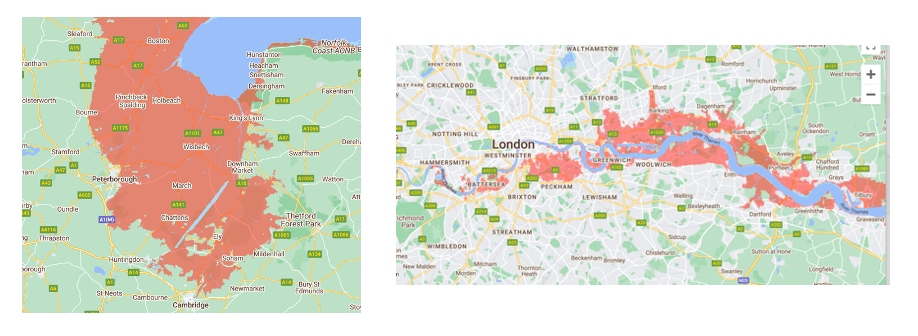
Fig. 3.5 Flooding in East Anglia and London associated with some predictions of sea level rise in the latter part of the present century.#
Rainfall and drainage systems#
Rainfall typically accumulates on the ground and disperses through three pathways. First the rain may run over the land surface downhill towards drainage channels, a process we will call surface run-off, \(S\), with a flux per unit area. Second the rain may infiltrate into the ground, flowing into the subsurface aquifers, a process we label with a flux, \(I\), per unit area. Third, some rainfall is taken up by crops and then returned to the atmosphere by the process of evapotranspiration, with a flux, \(T\), per unit area of the land. The controls on these three fluxes are associated with the type of vegetation, the slope of the land and the type of soil which will be more or less permeable, and hence will regulate the flux of water into the ground. If the surface run-off is too large, then this may lead to overspilling of drainage gullies and channels, and a flood may develop.
Eventually, the drainage and surface run off may reach a river where the flow is localised and moves downstream. If the flow exceeds the river capacity, the flow will overtop the river banks and flood to the flanks of the river, possibly spreading over the flood plain.
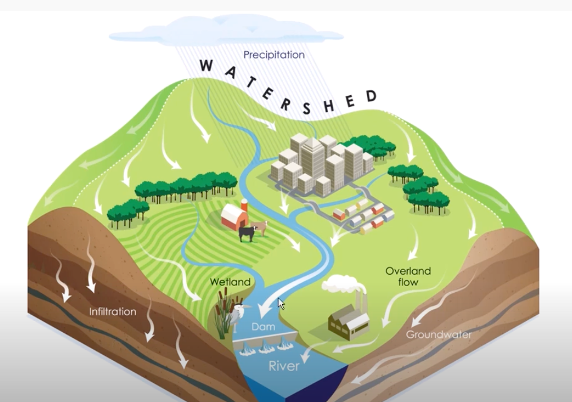
Fig. 3.6 A schematic showing the flow of water through a watershed scale system.#
Typically, the upstream topography of the land determines the boundaries between
different drainage basins along lines of maximum elevation known as the watershed.
An example of the Missouri and Mississippi river watersheds in the US is shown in
US_river_basins.
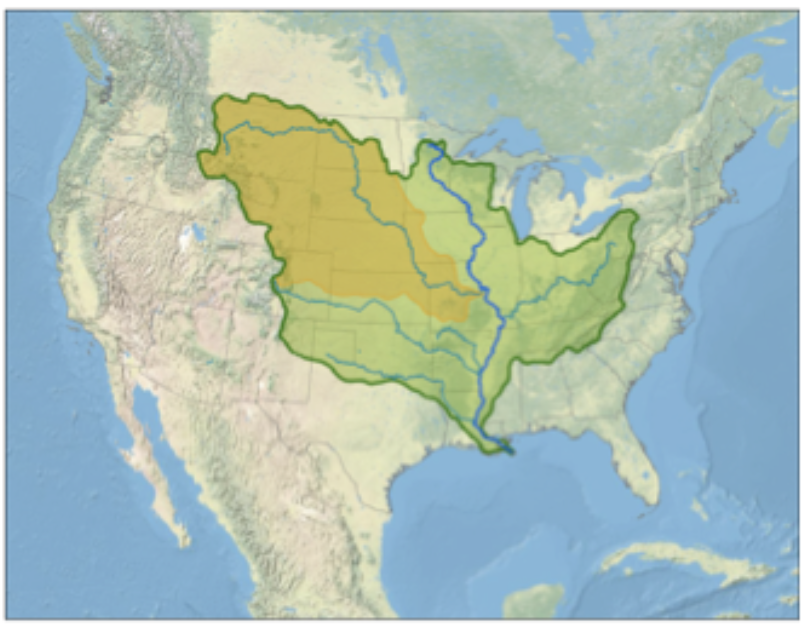
Fig. 3.7 Map showing the watersheds that flow into the Missouri (in yellow) and Mississippi rivers.#
To set the scene for modelling runoff, it is important to assess the volume flux involved in different types of rain event. Light rain may lead to \(0.1 \ \mathrm{mm \ hour^{-1}}\); moderate rain \(1 \ \mathrm{mm \ hour^{-1}}\) and heavy rain may be \(10 \ \mathrm{mm \ hour^{-1}}\). If a river has a catchment area of \(100 \times 100 \ \mathrm{km}\), corresponding to \(10^{10} \ \mathrm{m}^2\) then the volume of rain which falls in 1 hour may range from \(10^7 – 10^9 \ \mathrm{m}^3\). The surface run-off and some drainage fraction of this volume will flow into the river. If the rain fall were to flow directly into the river, it would require a flow rate capacity of about \(3 \times 10^3 - 3 \times 10^5 \ \mathrm{m^3s^{-1}}\). A large river may have a width of \(1000 \ \mathrm{m}\) and depth of \(10 \ \mathrm{m}\), and so the smaller flux could be carried down the river at a speed of about \(0.3 \ \mathrm{m s^{-1}}\) but the larger rainfall event would require a flow rate of \(30 \ \mathrm{m s^{-1}}\) if the rain directly entered the river. Fortunately the drainage system is large and leads to very significant delays in the rain fall reaching the river, as we will now explore. This delay is key to preventing flooding in many cases.
